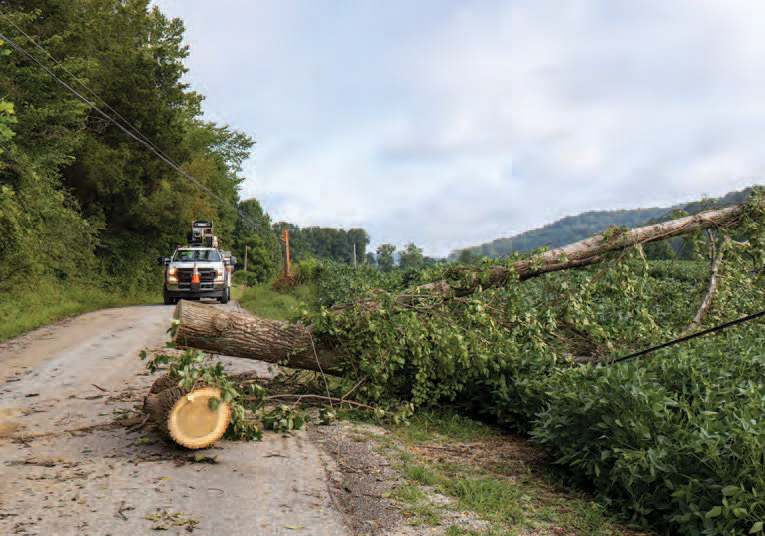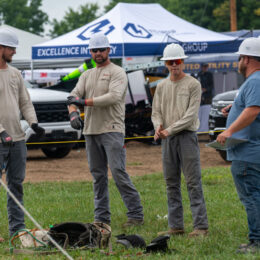
Tornadoes or other weather-related disasters often bring widespread power outages. Most electric utilities follow a similar methodical plan that ensures power is restored to the greatest number of people in the shortest amount of time in the safest manner possible. To do that, your co-op utilizes this priority system when line crews are working on outages.
PRIORITY 1
Transmission lines These high-voltage lines carry electricity from generating plants to substations (or between substations). They are supported by tall towers, usually of steel lattice framing or tall wooden poles in an “H” or “M” configuration. Since tens of thousands of people could be served by one transmission line, damage here needs to be taken care of first.
PRIORITY 2
Substations These electrical facilities contain equipment that switch or regulate the voltage of electricity. They lower the voltage from the transmission lines so the electricity can be transmitted through the distribution lines. If problems are taken care of at the substation, power to a large number of people can be restored.
PRIORITY 3
Main distribution lines You see these along roadways. They carry electricity from the substations to groups of consumers, like towns or housing developments. They are usually T-shaped and support three or more wires. When power is restored here, all consumers from this supply line will see their lights come on unless there is a problem farther down the line.
PRIORITY 4
Tap lines These are electric feeder lines running from the main distribution line to utility poles and underground transformers outside houses or buildings. They serve small numbers of consumers.
PRIORITY 5
Individual service These lines run from the transformer on the nearest pole to the individual consumer’s electric meter. Repairs to individual homes come after all other larger fixes. Consumers may see lights on at neighboring homes and see line crews working in the area, but they may still not have power. When this happens, it generally means the service line between their home and the nearby transformer has been damaged.
If a family member relies on life-sustaining medical equipment, please notify your electric cooperative now so it can be aware of the situation. Do not wait for an outage. Have an emergency generator or backup power in place.
In addition, unless you are personally affected, stay away from storm-damaged areas. Utility and other emergency vehicles will need access to the roads. If you see utility workers along your road or in your yard, please do not approach them for updates. It slows the progress and is dangerous for you and the lineworkers who are focused on their job.



